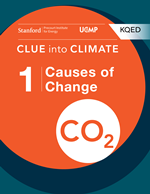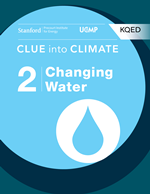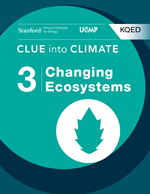H2CO3 (carbonic acid) → H+ (hydrogen ions) + HCO3- (bicarbonate)
This chemical reaction causes an increase in hydrogen ions in the seawater, thus increasing ocean acidity. The acidity of a solution is often reported in terms of pH. The pH scale ranges from 0 to 14. A value below 7 is acidic and a value above 7 is basic. The more acidic a solution, the higher the concentration of hydrogen ions and the lower the pH. There are many different ways to measure pH, ranging from litmus paper to sophisticated sensors.
Over the last several decades scientists have been measuring the levels of CO2 and pH throughout the ocean. Data from these types of measurements show that as the concentration of CO2 in the atmosphere increases, levels of CO2 in the ocean also increase, increasing the levels of hydrogen ions and thus decreasing the pH of the ocean. This suggests that atmospheric CO2 is contributing to the acidification of the ocean. It's important to note that the pH of the ocean is still basic (around a pH of 8), but scientists use the term ocean acidification to indicate the increase in hydrogen ions in the ocean, which lowers the ocean's pH.
Ocean acidification could have major impacts on the health and biodiversity of the ocean. For example, the increase in hydrogen ions in the ocean is making it harder for some marine invertebrates like corals, oysters and tiny sea snails to form their shells and grow. This has implications that extend throughout the marine food web.
Discussion Questions
- What does the term ocean acidification mean?
- Why is the ocean becoming more acidic?
- If the pH of the ocean is still around 8, why do scientists use the term ocean acidification?
- How does a decrease in ocean pH affect the ability of some marine organisms to build their shells?
- What do you think are some possible effects of ocean acidification?
An interactive version of this explainer is featured in our Clue into Climate e-book series. Click on the tabs below to download our free e-books and subscribe to our iTunes U course. You can also visit our e-books page to view our other offerings.

Look into the causes of climate change, and discover how scientists develop and use climate models.

![]()


Learn about how climate change influences precipitation patterns and how it impacts our frozen landscape.

![]()


Investigate shifts in the distribution of plant and animal species due to climate change, and the effects of increased carbon dioxide emissions on the ocean.

![]()


See how communities are preparing for sea level rise and other impacts of climate change, and ways we can help minimize future climate change.

![]()




